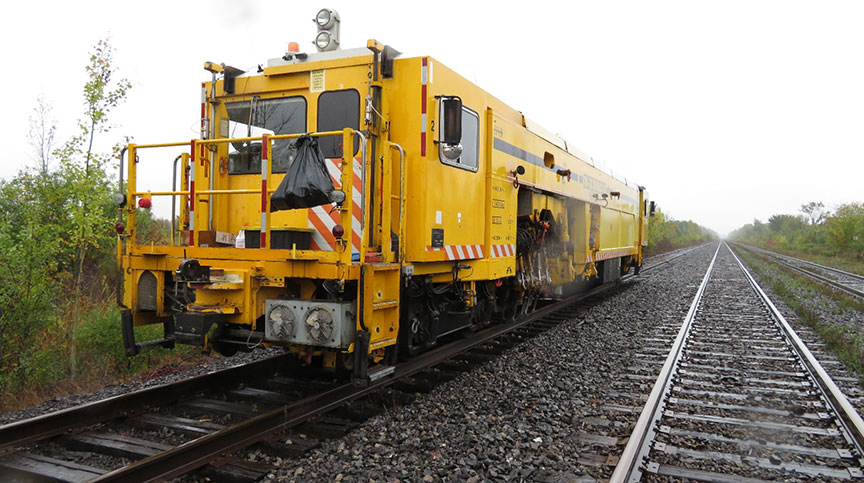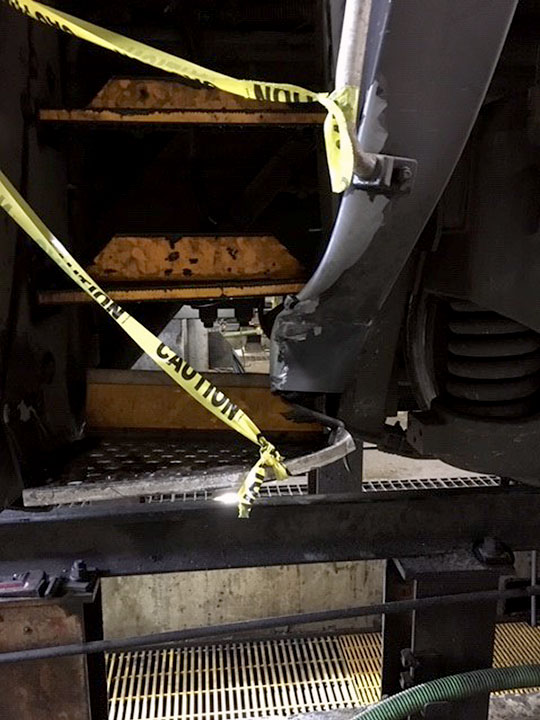Main-track Collision between train and track unit
Canadian National Railway Company
Freight train X 14921-01 and
Unimat tamper
Mile 84.27, Kingston Subdivision
Crysler, Ontario
The occurrence
On , at about 0010 Eastern Daylight Time, Canadian National Railway Company (CN) westbound train X 14921-01, proceeding westward at about 48 mph on the south track, came into contact with a track machine that was working on the north track at Mile 84.27 of the CN Kingston Subdivision, near Crysler, Ontario. The track machine had its work heads (tamping tools) extended horizontally, foul of the south track. There were no injuries. The track machine sustained damage to its tamping tools. The train sustained damage to safety appliances on both locomotives and 3 cars. Seven other cars sustained minor damage.
Safety communications
Safety advisories
Rail Safety Advisory Letter 617-09/18: Clearing trains through Rule 42 work limits
Media materials
News release
A gap in clearing procedures for track workers led to a 2018 collision between a train and a track machine near Crysler, Ontario
Read the news release
Deployment notice
TSB deploys a team of investigators to a collision involving a train near Crysler, Ontario
Gatineau, Quebec, 2 October 2018 — The Transportation Safety Board of Canada (TSB) is deploying a team of investigators to the site of a collision involving a Canadian National Railway train and track equipment near Crysler, Ontario. The TSB will gather information and assess the occurrence.
Investigation information
Download high-resolution photos from the TSB Flickr page.
Class of investigation
This is a class 3 investigation. These investigations analyze a small number of safety issues, and may result in recommendations. Class 3 investigations are generally completed within 450 days. For more information, see the Policy on Occurrence Classification.
TSB investigation process
There are 3 phases to a TSB investigation
- Field phase: a team of investigators examines the occurrence site and wreckage, interviews witnesses and collects pertinent information.
- Examination and analysis phase: the TSB reviews pertinent records, tests components of the wreckage in the lab, determines the sequence of events and identifies safety deficiencies. When safety deficiencies are suspected or confirmed, the TSB advises the appropriate authority without waiting until publication of the final report.
- Report phase: a confidential draft report is approved by the Board and sent to persons and corporations who are directly concerned by the report. They then have the opportunity to dispute or correct information they believe to be incorrect. The Board considers all representations before approving the final report, which is subsequently released to the public.
For more information, see our Investigation process page.
The TSB is an independent agency that investigates air, marine, pipeline, and rail transportation occurrences. Its sole aim is the advancement of transportation safety. It is not the function of the Board to assign fault or determine civil or criminal liability.

